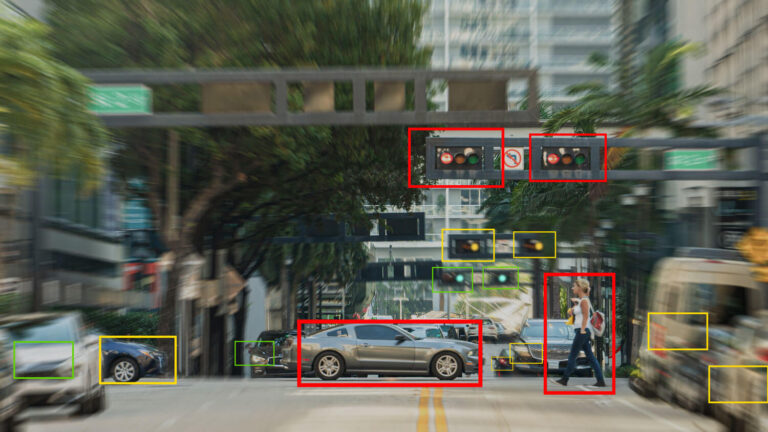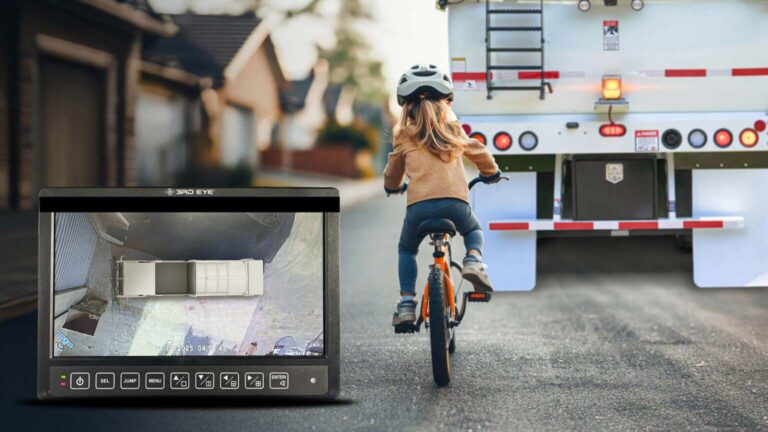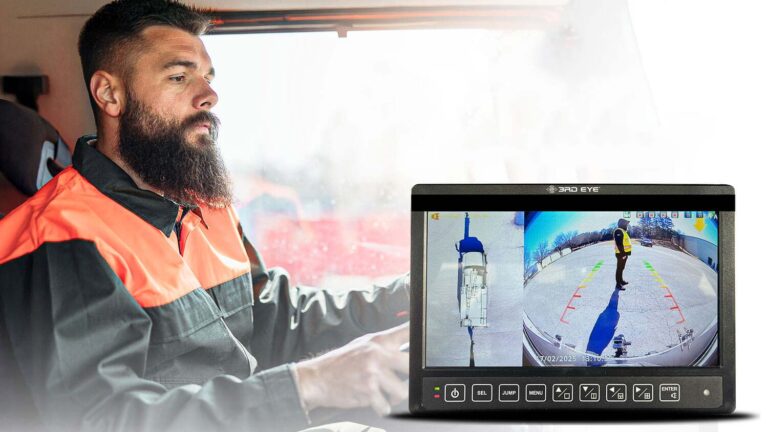How 3rd Eye Technology Helps Prevent Injuries, Reduce Property Damage, and Strengthen Fleet Safety
Operating large commercial vehicles in reverse is one of the most hazardous tasks drivers face each day. Whether navigating residential neighborhoods, busy job sites, alleys, transfer stations, or tight urban areas, backing a heavy vehicle introduces a unique set of risks. Limited visibility, blind spots, and unpredictable movement behind the truck make reverse operations a leading source of preventable accidents, injuries, and costly repairs.
3rd Eye Reverse Automatic Braking Technology was created to help address these challenges. By detecting potential hazards behind the vehicle and automatically applying the brakes when needed, the system supports drivers, increases situational awareness, and helps prevent collisions before they occur. It is a smarter, more proactive way to protect people, equipment, and overall fleet operations.
What Is Reverse Automatic Braking Technology?
Reverse Automatic Braking, or RAB, is an advanced safety solution that uses sensors along the rear of the vehicle to identify objects, workers, pedestrians, or other hazards that may be behind the truck during reverse operations. Once a hazard is detected, the system issues both visual and audible warnings inside the cab, giving the operator time to respond on their own. If the driver does not react quickly or the risk remains, the system automatically applies the brakes to help prevent an impact.
This creates an added layer of safety during the most vulnerable part of vehicle operation, especially in congested or unpredictable environments.
Why Reverse Safety Matters for Fleet Operations
Reverse-related incidents are among the most frequent and avoidable causes of injuries and property damage in commercial fleet operations. OSHA data shows that backing accidents account for about one quarter of all reported injuries in the solid waste and recycling industry. Similar patterns are found in construction, utilities, public works, delivery, and emergency response.
There are several reasons these incidents remain so common:
- Blind spots behind large vehicles limit what the driver can see.
- Narrow alleys, work zones, and residential streets require tight maneuvering.
- Pedestrians, workers, and motorists often move unpredictably.
- Drivers may have only seconds to respond to a developing hazard.
Even low-speed reverse collisions can cause serious injuries or extensive damage. Repairs, downtime, insurance costs, claims, and legal exposure create financial strain, while repeated incidents increase the chance of a catastrophic outcome. RAB provides a needed safeguard that helps reduce these risks and strengthens the overall safety posture of the fleet.
How 3rd Eye Reverse Automatic Braking Works
Reverse Automatic Braking Technology protects people and property through a straightforward process designed for reliability in real-world conditions.
- Hazard Detection
Sensors placed along the rear of the vehicle actively scan behind the truck whenever it is placed in reverse. These sensors are designed to detect people, equipment, stationary objects, and unexpected movement within the truck’s path. - Driver Alerts
If the system identifies a potential hazard, drivers receive immediate visual and audible alerts in the cab. This gives operators time to stop the vehicle on their own, which supports safe habits and reinforces driver awareness. - Automatic Braking
If the hazard remains or the operator does not respond in time, the brakes apply automatically to help stop the truck before a collision occurs. This is often the difference between a close call and a serious incident. - Safety Event Creation
Each activation of the system automatically generates a safety event within the 3rd Eye platform. Fleets can review the event, understand the situation that occurred, and use that data for coaching or trend analysis. - Seamless Operation
The system is active only when the vehicle is in reverse. It does not interfere with forward driving or other vehicle functions, ensuring smooth operation without unnecessary interruptions.
Key Benefits of Reverse Automatic Braking Technology
Accident Avoidance and Hazard Reduction
By combining rear detection with automatic braking, the system helps prevent collision events that are difficult for drivers to predict or see. This added level of protection helps reduce both injuries and damage to vehicles, property, and surrounding equipment. The reduced frequency of incidents often results in fewer claims, improved uptime, and more consistent route performance.
Proactive Risk Management
Reverse Automatic Braking supports stronger safety culture by helping fleets identify recurring hazards and patterns over time. Event data gives fleet leaders insight into route characteristics, high-risk environments, and operator behavior, helping them make informed operational decisions. Over time, these insights create a more proactive, prevention-focused approach to safety.
Litigation and Claims Support
Clear, documented safety events help fleets establish exactly what happened during an incident. This can be critical when addressing claims, determining responsibility, or defending drivers against false accusations. When combined with 3rd Eye camera systems, fleets gain a detailed, time-aligned record of both the event and the path that led to it.
Driver Training and Education
Safety events serve as valuable coaching tools that allow managers to walk through real scenarios with drivers. These examples provide more meaningful instruction than hypothetical situations, helping drivers understand how hazards develop and how to avoid them. Over time, this reduces repeat incidents and strengthens operator confidence.
Improved Safety Best Practices
Reverse Automatic Braking helps reinforce proper habits and encourages consistent behavior across the fleet. Drivers become more aware of their environment because alerts draw attention to developing hazards. This often leads to better decision-making, fewer rushed maneuvers, and smoother backing operations.
Continuous Improvement and Long-Term Safety Gains
Each event recorded by the system contributes to a larger historical picture of fleet operations. Reviewing long-term data helps identify trends, support compliance programs, and guide safety investments. Fleets can measure progress, set achievable goals, and create measurable improvements over time.
Industries That Benefit from Reverse Automatic Braking
Reverse Automatic Braking Technology delivers meaningful safety improvements across a wide range of industries:
- Refuse and recycling fleets gain added protection as trucks navigate busy neighborhoods and transfer stations.
See garbage truck fleet solutions - Construction fleets protect workers and equipment on active job sites where visual distractions are common.
See construction fleet solutions - Utility and public works departments gain an additional safeguard around on-the-ground personnel.
See utility fleet solutions - Delivery fleets use RAB to navigate congested alleys and loading zones with more confidence.
See solutions for delivery fleets - Emergency responders benefit from automated support during urgent operations where conditions shift rapidly.
See emergency fleet solutions - Any operation involving large commercial vehicles sees reduced risk during reverse maneuvers.
A Connected Safety Solution
Reverse Automatic Braking integrates smoothly with the 3rd Eye Connected Collections ecosystem. Combined with 360° camera systems, smart cameras, gateways, telematics, and analytics tools, fleets gain a unified, data-driven view of safety performance. This connected approach makes it easier to manage risk, monitor behavior, improve training, and support long-term operational efficiency.
Learn about Driver Safety and Education Solutions
Learn more about Connected Collections
Proven Expertise and Support
3rd Eye is part of Environmental Solutions, a Terex brand and a leader in refuse and fleet safety technology. Fleets across the country rely on 3rd Eye for dependable systems that perform in the field every day. Installation, integration, and ongoing support are backed by knowledgeable teams who understand both modern fleet challenges and the environments where this technology operates.
Environmental Solutions also offers Nexteligence Technician Training, a comprehensive program designed to help service technicians maintain and support advanced connected technologies like 3rd Eye sensors and camera systems. Through blended learning, hands-on instruction, and certifications, the program helps ensure that safety systems remain reliable, accurate, and ready to protect operators.
Learn more about 3rd Eye Nexteligence Technician Training Classes
Discover the Difference
Reverse Automatic Braking Technology helps operators react faster, make informed decisions, and perform one of the most hazardous tasks with greater confidence. It protects workers, supports safer operations, and helps fleets reduce the avoidable costs associated with reverse-related accidents.




